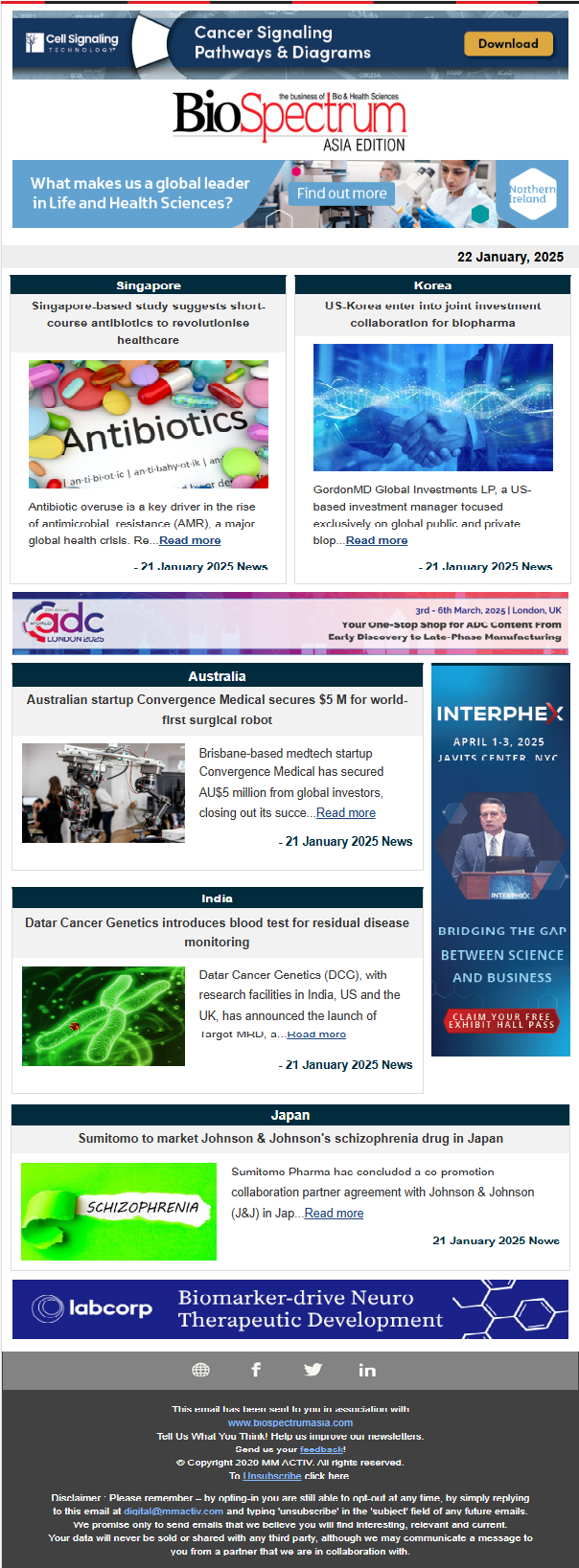
image credit- shutterstock
Import tariffs have emerged as a key trade issue since President Donald Trump took office on January 20, 2025. Among the many measures announced, Trump has pledged to impose a 25 per cent tariff on all imports, including pharmaceutical products. President Trump indicated that pharmaceutical-specific tariffs could be enforced as early as April 2, 2025.
Pharmaceutical supply chains are heavily reliant on international trade, with China and India providing more than 70 per cent of the active pharmaceutical ingredients (APIs) used in U.S. drug manufacturing. In 2023, the US spent more than $2.02 billion on pharma imports from China alone, according to the U.S. Trade Commission. India exports an approx. 47 per cent of the generic drugs to the US. This helps to bring the cost of drugs down for the US consumers. The US largely exports patented and innovative drugs to India that values around $800 million. The introduction of tariffs could disrupt these supply chains.
Rising production costs due to these tariffs are expected to lead to higher drug prices. Generic drug manufacturers, which often operate on slim profit margins, are likely to be hit hardest. While the 10 per cent tariff on Chinese goods may not have a major impact on branded drugs, generic companies are expected to face significant challenges. Increased API costs could force some manufacturers to reduce output or exit the market entirely, reducing competition and potentially driving up prices.
China’s growing role in biopharma innovation is evident through numerous high-profile licensing deals. Major pharmaceutical companies announce deals with Chinese biotech firms practically every day. For example, Roche signed an $80 million upfront deal with Innovent, a Chinese biopharma company, in January 2025. Prior to that in December 2024, GSK struck two partnerships with Chinese companies, Hansoh Pharma and DualityBio, worth $1.7 billion and $1 billion, respectively. These tariffs could disrupt such collaborations and have significant ramifications for the biopharma sector, which has become increasingly reliant on China for promising drug candidates. This could alter the landscape of the global pharmaceutical industry.
“If the tariff is indeed imposed as expected it will impact all countries. To that extent, pharma exporters will not see a change in relative effectiveness compared to those based in other countries (as the tariff impacts the price of all pharma exports to the USA). It does make domestically produced pharma products more competitive in the USA, but unless the US can offset its current imports with increased domestic production, they are still going to need to import from somewhere,” said Benjamin Udy, Lead Economist, Oxford Economics Australia.
Reimagining the Supply Chain
The new tariffs are causing significant concern for generic drug companies. “The 25 per cent tariff on pharmaceutical imports will pose significant challenges for generic drugmakers, which already operate on low gross margins. This tariff will increase production costs, disrupt supply chains, and create financial pressures that may force some suppliers out of the market, further exacerbating drug shortages,” said Ophelia Chan, Senior Business Fundamentals Analyst at GlobalData.
Udy echoes similar sentiments and said, “Admittedly, the 25 per cent increase in price may be a bigger deal for generics that are being sold at near cost, to the extent that more expensive products also contain a larger mark-up, there may be more capacity for retailers or distributors in the USA to absorb some of the tariff.”
Experts propose reshoring production to the US or nearshoring facilities to key regions where the drugs will be marketed or distributed. Sharing her views on this, Ophelia pointed out “To remain competitive, generic companies must reassess their manufacturing and supply chain strategies, including reshoring production to the US and/or nearshoring facilities to key regions where a drug will be marketed or distributed. While these strategies require substantial capital, they offer a long-term solution to mitigate supply chain risks and ensure access to high-priority generics. To offset the associated costs, generic companies should potentially explore partnerships with government agencies to secure financial incentives, facilitating a smoother transition while ensuring production capacity meets market demand and operational needs.”
“Indian pharmaceutical companies may explore a shift towards localised production facilities in the USA or forming strategic partnerships with key distributors in the USA to offset the impacts of tariffs. However, there would be challenges around increased manufacturing costs (as against localised manufacturing in India), regulatory compliance, and supply-chain realignments which could further slow this transition,” added Arvind Sharma, Partner, Shardul Amarchand Mangaldas & Co, India.
However, reshoring/nearshoring production is a long-term strategy that requires significant investment in infrastructure, regulatory compliance, and workforce development, and it could take years, if not decades, to fully implement.
Therefore, diversifying export markets is key. “In order to cope, pharma generics companies may need to diversify their export markets which would include increased focus on regions such as Latin/South America, Europe, and Africa, thereby reducing their reliance on the USA,” said Sharma.
As they say, every challenge also presents an opportunity. This situation provides generic companies with a chance to adapt and grow. “Indian pharma companies should invest in enhanced production efficiencies, supply chain optimisations, and strengthen their presence in alternative markets outside of the USA. While the proposed tariffs pose significant challenges, they could also prompt Indian pharmaceutical firms to diversify geographically and improve operational resilience,” said Sharma.
“Finally it’s important to remember that the tariff only applies to exports to the USA, other markets remain accessible, and to the extent that consumers in the USA favour domestically produced pharma products to avoid the tariff, the USA exports of pharma may actually fall, creating more opportunity for exporters in other country to capture more of the existing demand from other markets. The US currently exports more than 10 per cent of global pharma exports so a reduction in those exports to meet domestic demand could create significant opportunities for other exporting countries,” said Udy.
While it is still unclear whether these tariffs will achieve their goal of boosting US manufacturing, the next few months will be critical in assessing their full impact on the global pharmaceutical industry. Although increased costs may lead to higher drug prices and strain international partnerships, this situation also creates opportunities for innovation and strategic realignment. The future of the pharmaceutical sector in a post-tariff world will hinge on how quickly and effectively companies can adapt to the rapidly changing geopolitical landscape.
Ayesha Siddiqui




